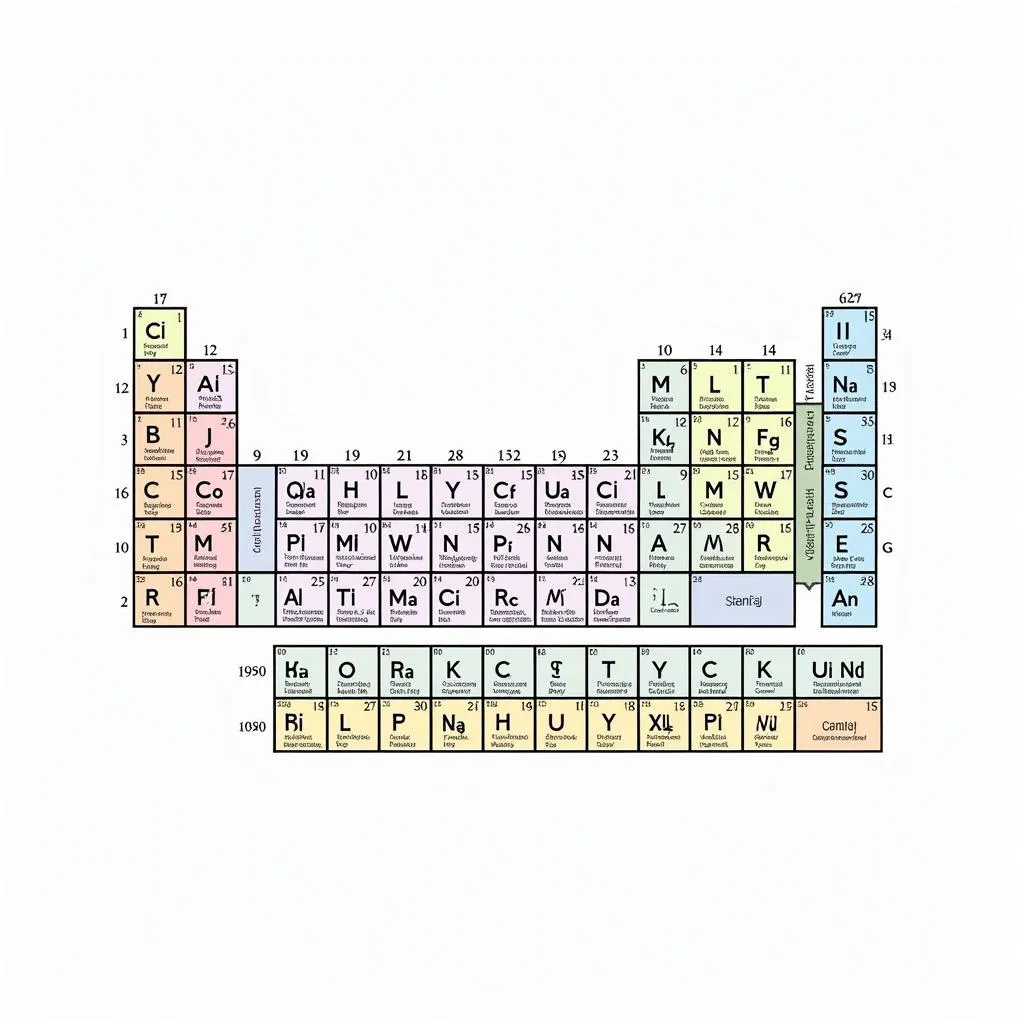“Learning the periodic table is like learning the alphabet; you must know each letter to read a sentence!” This quote from a chemistry teacher has inspired many 8th graders, but with 118 elements, how can you memorize them all? Don’t worry, this article will reveal tips for easily and effectively memorizing the first 20 elements of the periodic table!
Why Learn the Periodic Table?
The periodic table is like a “map” of the atomic world, containing secrets about the structure and properties of elements. Mastering the periodic table is key to understanding chemistry, solving exercises easily, and even helping you excel in other science subjects like biology and physics.
Effective Ways to Learn the First 20 Elements of the Periodic Table
Imagine you are learning English; you need to memorize the alphabet before you can start reading and writing correctly, right? Learning the periodic table is similar; you need to “memorize by heart” the first 20 elements to build a foundation for further knowledge.
1. Image Association Method
This method is very effective because our brains easily remember images better than dry numbers.
- Step 1: Find an image association:
- Example: Element Hydrogen (H) – you can associate it with the image of the sun because Hydrogen is the most abundant element in the universe.
- Step 2: Create a story:
- Example: “The sun (H) shines brightly, illuminating the earth, where animals (He) fly and frolic.” (Here, He is for Helium)
- Step 3: Memorize:
- Repeat the story many times, and you will easily remember the order of the first two elements, Hydrogen (H) and Helium (He).
2. Grouping Method
Divide the periodic table into smaller groups, each group containing 3-5 elements. Then, memorize each group, and then combine the groups together.
- Example: The first group of elements: Hydrogen (H), Lithium (Li), Sodium (Na), Potassium (K)
- Create a story: “Hydrogen (H) is the lightest element, Lithium (Li) is a soft metal, Sodium (Na) reacts strongly with water, Potassium (K) is an important nutrient for plants.”
3. Using Mind Maps
Mind maps are effective tools to support information memorization. You can use mind maps to organize and classify elements by group, period, atomic number, chemical symbol, etc.
- Example: Draw a mind map of the first 20 elements, with each branch being an element, noting its position, atomic number, chemical symbol, name, etc.
4. Regular Practice
“Live and learn,” to memorize the periodic table, you need to practice regularly.
- Practice by:
- Rewriting the periodic table of the first 20 elements, reciting it by heart,
- Answering multiple-choice questions,
- Solving chemistry exercises related to the periodic table.
Expert Advice
Mr. Nguyen Van A, a famous chemistry teacher, shares: “To learn the periodic table effectively, it is important that you choose a method that suits you, practice persistently, and set clear goals.”
Frequently Asked Questions When Learning the Periodic Table:
- How to memorize the chemical symbols of elements?
- Use abbreviations, for example: Na (Sodium) – Na is an abbreviation for “Natrium” (Latin for Sodium), K (Potassium) – K is from “Kalium” (Latin for Potassium).
- How to distinguish elements in the same group?
- Elements in the same group have similar chemical properties because they have the same number of electrons in their outermost shell.
- How to determine the position of an element in the periodic table?
- Use the atomic number, period number, and group number to determine the position of the element in the periodic table.
 Periodic Table of the First 20 Elements
Periodic Table of the First 20 Elements
Conclusion
Learning the periodic table is a process that requires persistence and the right methods. Choose effective learning methods, practice regularly, and you will conquer the periodic table of chemistry easily!
Leave a comment below if you have any questions about how to learn the first 20 elements of the periodic table.